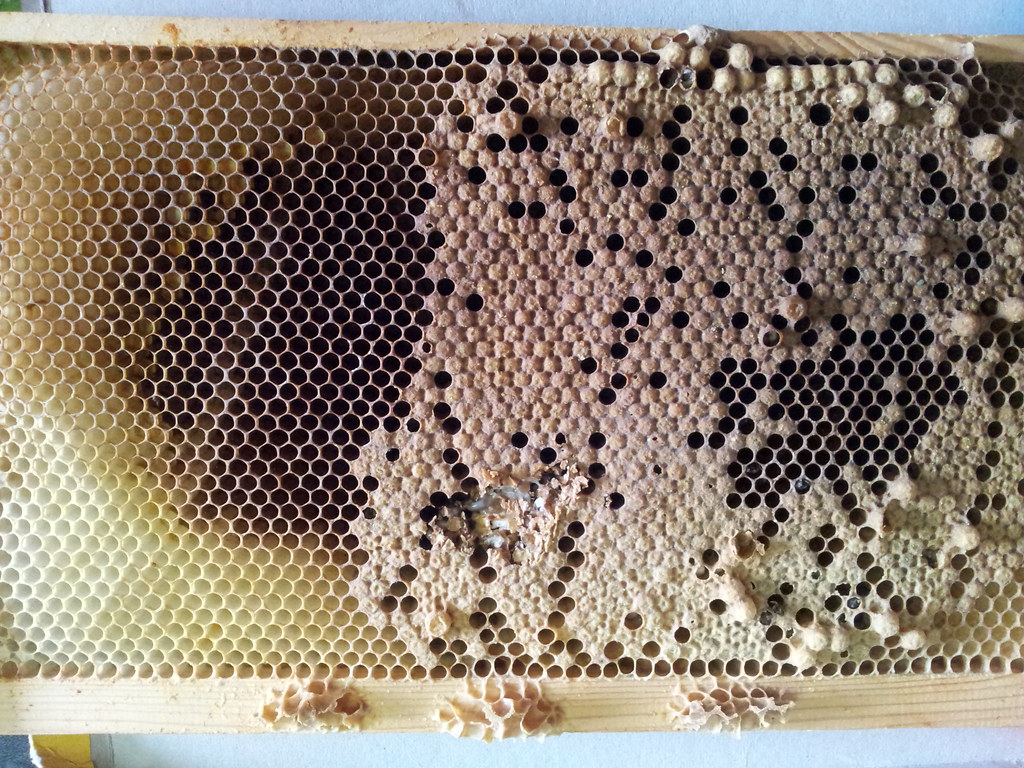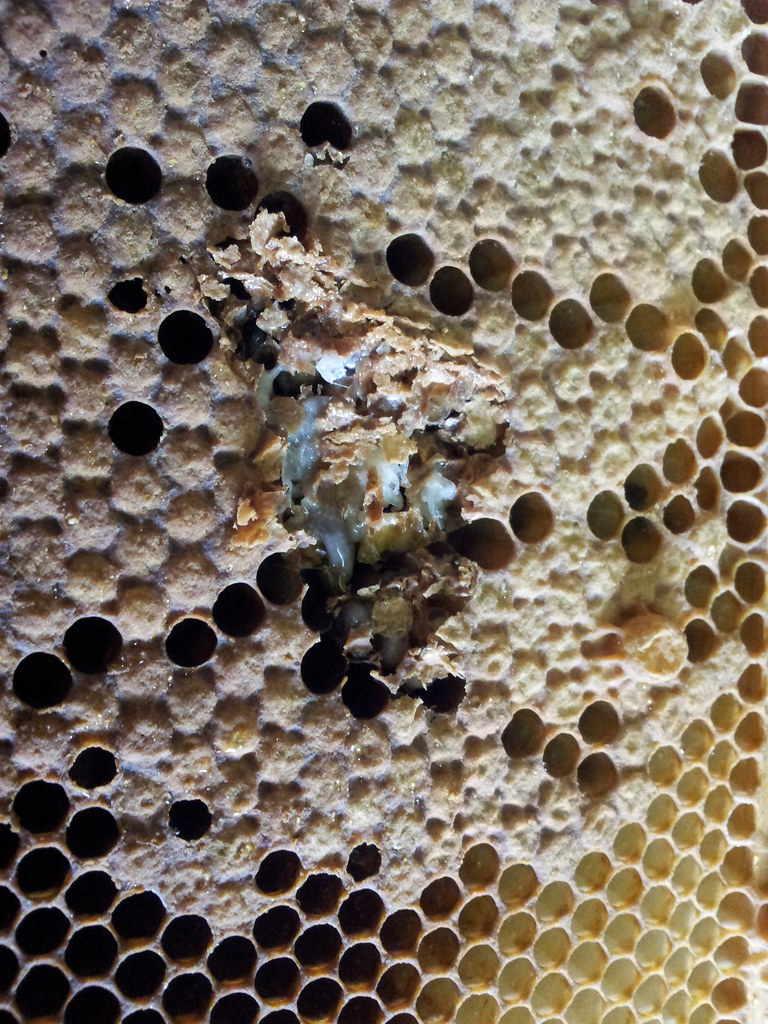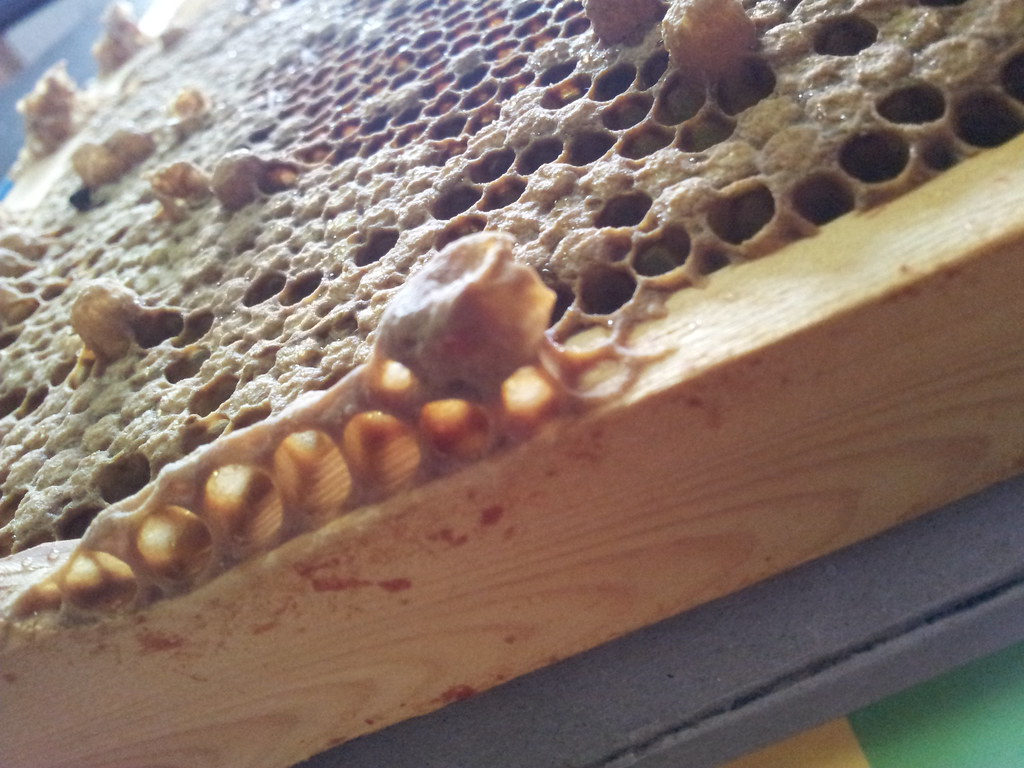Anyone who lives in the north of England will be well aware of the lovely weather we have been having over the last few weeks, in fact we have had little more than a few hours of dry weather since the last time I went to the Bees and split the hive. Due to this bad weather I have been increasingly worried for the Bees, especially the hive that I know is queenless. For a few days I have been trying to get to the Bees but kept putting it off due to the rain but then I received a email from the National Bee Unit advising us (the Beekeeper) to feed our Bees as starvation is a real issue at the moment. I decided that opening the hive for a short time and risking a little water getting in was better than letting them starve.
Friday just gone would have been a perfect day for feeding the Bees as it was much better weather and the sun even revealed herself for a short time, unfortunately I had already made plans for the day and wasn't at home. By the time I did get home it had started raining again anyway. The following day, yesterday, was again slightly better so I prepared some syrup and took a spare frame feeder up with me to the apiary. I had to stop off at my Dad's on the way as he has the keys to the allotment gate, it was about this point it started raining again.
When I got to the allotment the first thing I did was to have a look at the apiary and I was surprised to see a Bee flying back into one of my hives; it was only lightly raining and as it wasn't raining a short time before she could have been returning from a foraging trip. The first hive I fed was the new hive that has Queen Bee-atrix in. It was fairly simple to do this hive as it has no supers on yet so less equipment to move. I removed the hive roof and slid the crownboard slightly back to reveal the feeder frame only. The sugar syrup was then poured into the frame filling it to the top. I didn't fully open the hive but from the small amount I opened it I could see there was a lot of activity. I will do a full inspection as soon as the weather allows.
The next hive was slightly different. As it already had two supers on it I had to remove these first; I did have a quick look in the supers first and found that they did still have some stores but not much. This time of year with better weather they should be full of oil seed honey but unfortunately it was not to be.
Once I had taken the supers off and placed them to one side I removed the Queen excluder (not sure why that is still in as this hive is Queenless!) to allow me access to the brood chamber, which was full of Bees! The first thing I needed to do was remove a frame so I could put the frame feeder in. Last time I was in the hive I moved a frame of brood further out to the edge of the box, this was a mistake and I will not do it again. With the weather being wet and cold the Bees may have formed a ball to stay warmer and by doing this they have left the frame that was at the edge and due to this it has got colder and all the brood has died. I have taken this frame out and taken photos of it which I will put at the end of this post. With the space created by removing this frame I placed the other frame feeder in it's place and filled it with the remaining syrup. Now for the good news......
......The rain was even lighter now so I decided to have a quick look at a frame, unfortunately I was unable to take any pictures of what I saw which is a shame as it was the best sight I could have hoped for, a Queen cell fully formed and capped; this means the Bees have realized they have no Queen and raised a new one from eggs that where already in the hive, they do this by feeding a freshly hatched larva royal jelly only. Now with any luck there will be some decent weather once she has hatched so she can go and do her mating flight, fingers crossed! After seeing the Queen cell I closed the hive up. There probably will be more that one Queen cell in there but I didn't want to disturb them too much.
 |
| The frame of dead brood. |
 |
| I removed some of the cappings to see what state the larva was in. |
 |
| The larger cells have drone brood in them |
 |
| This shows pollen present in the frame |
 |
| A Queen cup on the side of the frame, if an egg had been placed in this the Bees could have created a Queen cell from it |
 |
| By placing a match into a cell you can test for American Foul Brood; if it was present it would "rope" from the match, I can only describe this as a snot like substance stuck to the match, luckily it looks like I don't have AFB |
 |
| The lines of empty cells are actually where the wire runs through the foundation to give it extra strength, the Queen has detected this and chosen not to lay in there. I have read somewhere that this is actually a good trait for a Queen. |
 |
| A dead Bee not fully developed, if it had died of European Foul Brood you would be able to see it's gut through the skin and it would be bright white or creamy. It looks like I don't have EFB either thankfully. |
 |
| Another Queen cup |
I have learned a lesson with this and in the future will not move frames out of the cluster in the brood chamber. I have had a good look at the frame and I am fairly happy the brood died of being chilled at the edge of the brood box, rather than any kind of disease. I will do full inspections soon, if the weather picks up, and hopefully will get photos of the new Queen. I will also attempt to mark her to make her easy to spot!









No comments:
Post a Comment